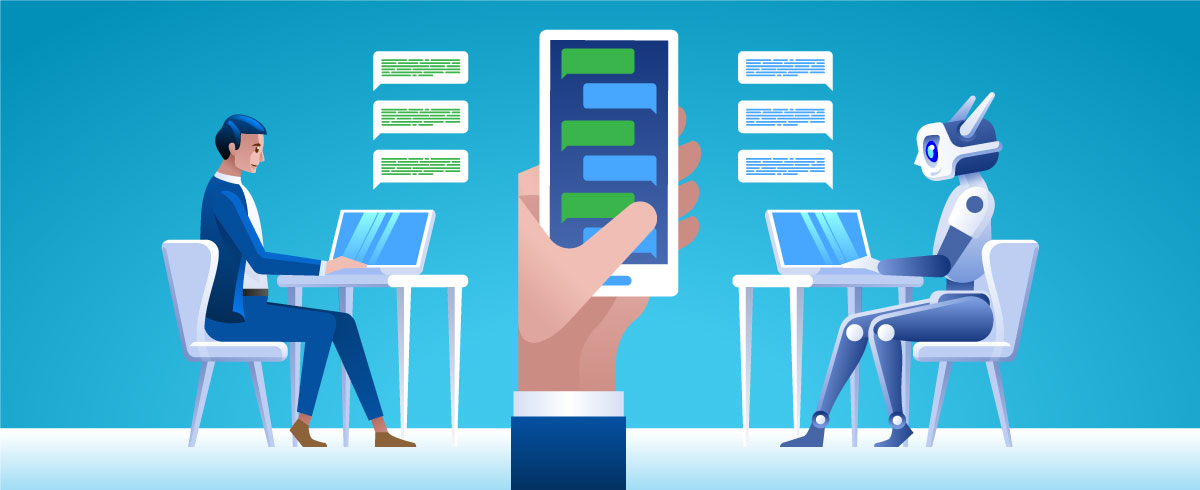
It’s the age old question of artificial intelligence pitted against the human mind. While not as epic as it sounds, the live web support version of that concept is, in fact, Chatbots versus Human Agents – which is better?
As with any other battle, picking a side means accepting the pros and cons of the team you support and the side that is more likely to align with your own personal interests and values. In technology, it is no different. Choosing to adopt either Chatbots or human agents for customer service is highly dependent on the needs of your company as well as your consumer base.
Let’s these two sides go head to head, and you can decide which side you’re on.
Round 1: Cost
Depending on where your company is based, labour fees and employee benefits can cost you a bomb. Taking into consideration training costs and potential service recovery costs (when your front liners make a booboo), you could be dishing out more cash than expected when you agree to hire an individual to manage customer service queries. With customer-facing yet repetitive administrative jobs, you can also expect for your turnover rate to be high as employees become unmotivated.
By incorporating a Chatbot onto your website, the cost that you are looking at involves building the programme and maintaining it to ensure that it runs efficiently. When executed well, a Chatbot should be able to filter out commonly asked questions and address them quickly to improve your customer service experience. This may lead to cost savings in the long run, provided that the Chatbot itself is able to meet your consumer’s expectations.
Round 2: The Human Factor
Chatbots are built based on a simple input system, and this makes them typically very systemic and organised. The computer programme can look up information much quicker than a human would and within milliseconds, assess its relevance to the problem that has been posed. The Chatbot is thus very good at looking at facts, processes, and protocols in order to provide the consumer with the information he or she needs in an efficient manner.
On the other hand, human agents are good at being just that – human. This means that agents can pick up on the cues in the consumer’s voice over the phone that says more about what is not being said. Coupled with the ability to empathize, human agents have the capacity to express concern and interest over the consumer’s dilemma which will help to alleviate some of the consumer’s frustrations. If trained well, human agents will know when to speak, when to take a step back and when to reason with the consumer.
Having said that, there are ways to build empathy cues into a Chatbot which include the choice of words presented to the consumer. Regardless, simply the knowledge that you are interacting with a computer programme can make the overall experience colder and more unpleasant for the consumer.
Round 3: Efficiency
This one may look like a knock out round – but you should look out for the counter-attack.
When it comes to efficiency, the benefits of having a Chatbot may seem overwhelming. The automation of customer service means that your Chatbots can handle multiple chats and attend to multiple queries simultaneously. The responses of a Chatbot are almost instantaneous, and the bot can be kept online 24/7, keeping your customer service ‘personnel’ accessible at all times. This level of efficiency definitely cannot be achieved with a team of human agents.
Here’s the counter-attack – the efficiency of your Chatbot is still highly dependent on your ability to pre-train the Chatbot with relevant queries and solutions. At the planning phase, this still requires human input in order to build something that works. If the Chatbot is not detailed or is unable to provide answers to frequently asked questions, your consumers are more likely to abandon it and still opt for calling in.
Not only does this create an inefficient tool, but it also means that your consumer’s user experience will be adversely impacted. In an attempt to digitalise some of your work processes, a clear inability to do so leaves a bad aftertaste as an initiative that has not been well thought out or tested. Efficient as a Chatbot may be in theory, the efficiency of your bot hinges on the efficiency of your people. Ironic, isn’t it?
Round 4: Your Consumers’ Perception
The nature of your business and your branding determines the audience that you attract. And the type of audience that you have determines how receptive they will be to interacting with Chatbots or customer service personnel.
With a tech-savvy, digital audience, you can expect for them to be aware that a Chatbot is not perfect. Nonetheless, this group will likely understand and appreciate the concept of a Chatbot, and use it to their benefit when needed.
Certain segments of the population, however, will not see the utility in Chatbots for whatever reason. This resistance and reluctance to use the platform may result in a complete failure of the tool, despite it being perfectly built to address some of your consumer’s needs.
Your consumer’s digital savviness and perception of automated customer service are crucial factors to determine the success of implementing such a programme. Ask, otherwise they won’t tell!
Bots are not always the answer, and constant human interaction may not always be the solution. The answer is somewhere in between, incorporating bots for fuss-free queries and humans for more intricate problems. There isn’t a winner in this battle, but working to incorporate both is your best bet to claim the winning prize.
At Krome, we specialise in website design services as well as user interface websites. If you or your client are interested in creating a site, it’s time to tell us about your project or have a chat about what we can do. You can contact us here.